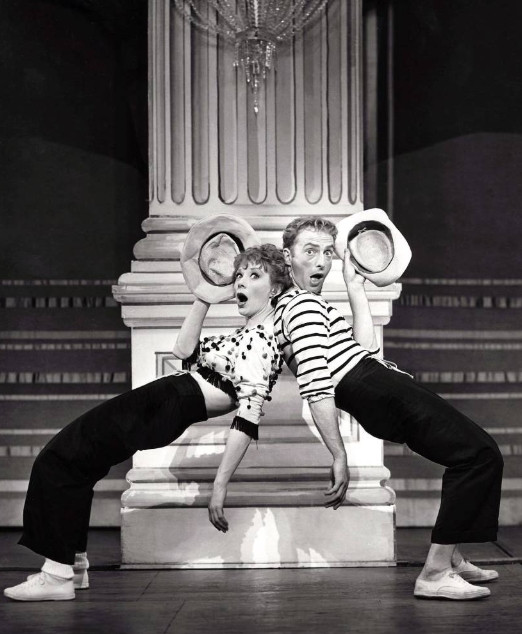Courtesy of the Los Angeles Times
The anniversaries of the deaths of two of Broadway’s biggest stars, Bob Fosse and Gwen Verdon, remind us what they gave the world of stage performing. Fosse, born in 1927, aspired to be a dancer as a child. At the age of 13, Fosse performed as a tapper in burlesque shows, dreaming of being the “next Fred Astaire.” However, he only performed for a short period in his life, quickly transitioning to choreographing and directing. Fosse created his own dance style that went against most traditional techniques. He choreographed his first musical, “The Pajama Game,” in 1954. Next, he partially choreographed and starred in George Abbot’s show “Damn Yankees.” Before this project, he was not a well-known or respected choreographer at all, but after people saw what he created in “Damn Yankees,” they were hooked. No one could get enough of Bob Fosse. It was while working on this show that he met Verdon, then a rising performer.
Verdon, who was born in 1925 with rickets (a rare bone-weakening disease), used dance to heal her legs. After years of training, she decided to do it professionally. Verdon landed her big break in 1953 as one of the lead roles in Cole Porter’s “Can-Can.” After opening night, the audience was in awe, chanting her name until she came back on stage to complete her bows. In 1955, she was cast in “Damn Yankees,” where she met Fosse. The pair would later marry in 1960.
Fosse and Verdon did many shows together, with Fosse choreographing and Verdon starring, including “Damn Yankees,” “Redhead,” “Sweet Charity” and “Chicago.” Later on, Verdon assisted Fosse in choreographing and directing the movie adaptations of “Sweet Charity,” “Cabaret,” “Chicago” and “All That Jazz,” based on Fosse’s life. Even after separating in 1971, they still collaborated on almost every project. Fosse won one Academy Award, nine Tony Awards and three Emmy Awards, while Verdon won four Tony Awards and one Grammy Award.
This past April, the TV show “Fosse/Verdon,” developed by Steven Levenson and Thomas Kail, was released. The show, which stars Michelle Williams and Sam Rockwell, dives into the creative and romantic relationship that the two artists shared.
Both actors did an incredible job, with Williams winning an Emmy for her performance. Spanning only eight episodes, the show reveals many unexpected facts about the stars’ lives. They both came from dark backgrounds, with Fosse having unsupportive parents, a verbally abusive dance teacher and even being sexually assaulted while performing in nightclubs at the age of 13. Verdon had similarly horrific experiences – being raped at 17 years old and having a son. Her parents made her marry the father of her child, whom she later divorced, leaving her son with her parents.
“Fosse/Verdon” also touches upon Fosse’s many relationships with dancers in his shows. A major love interest of his was Ann Reinking (Margaret Qualley), whom he met in 1972 while choreographing and directing the show “Pippin.” Reinking was a dancer in the show, who soon became Fosse’s prodigy.
The show also depicts Fosse’s addiction to drugs and his time spent in rehab shortly before starting work on “Chicago.” After starting rehearsals for “Chicago,” Fosse suffered a heart attack and had to undergo open heart surgery. After all of this, Fosse still continued to work and create.
In 1986, Verdon started on a “Sweet Charity” revival, but it just did not work without Fosse. Consequently, Fosse and Verdon worked together on the project, like many years prior. On the opening night, however, Fosse suffered a heart attack, passing away in Verdon’s arms on Sept. 23, 1987.
Across the nation, Broadway fans still know Fosse and Verdon. Performers learn about Fosse and the incredible dedication it takes to learn the “Fosse” style of dance. Young girls dream to be Verdon when they grow up. Although they separated romantically, they were forever connected artistically. They were able to take whatever life threw at them and create something beautiful. They changed the world of Broadway and created a new caliber of artist. They were necessary to the modern performing world. They were Bob Fosse and Gwen Verdon.







